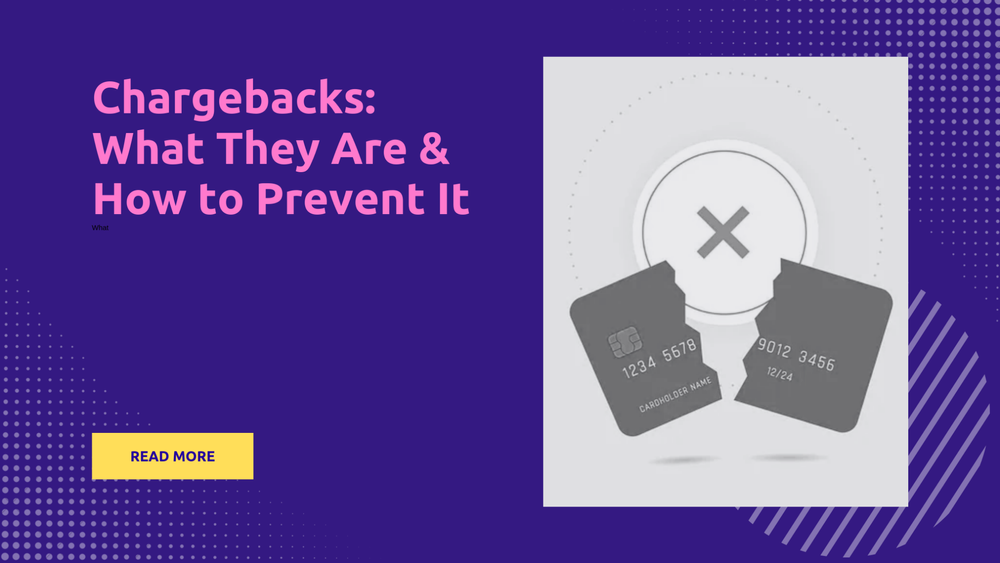2024's Top Stripe Alternatives for Seamless Payments!
By Sonaksh Singh Rawat on
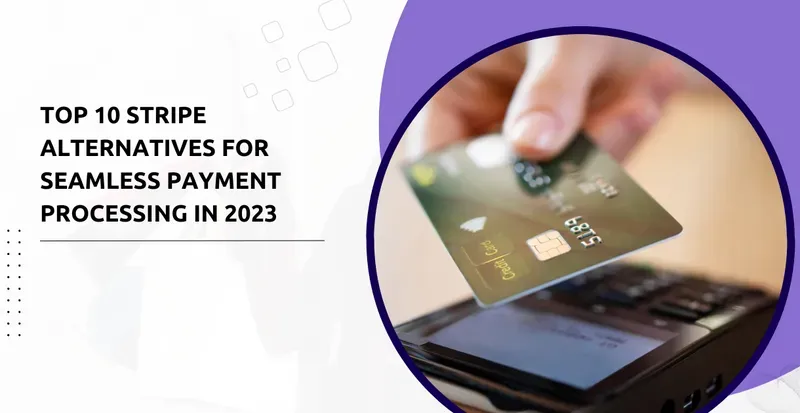
Unlock the Secret Weapons of Payment Processing: Top Stripe Alternatives for Unbeatable Business Growth in 2024!
The Best Stripe Alternatives for 2024
Stripe is highly favored for payment processing, but it may not meet the specific needs of every business. For those in search of Stripe alternatives, a broad selection of options is available.
This article explores the leading Stripe alternatives for 2024. It evaluates their features, costs, and other critical factors, aiming to help find the ideal payment processing solution from a carefully selected list of Stripe’s competitors.
9 best alternatives to Stripe
Explore the top 9 Stripe alternatives for enhancing your business:
1. Square
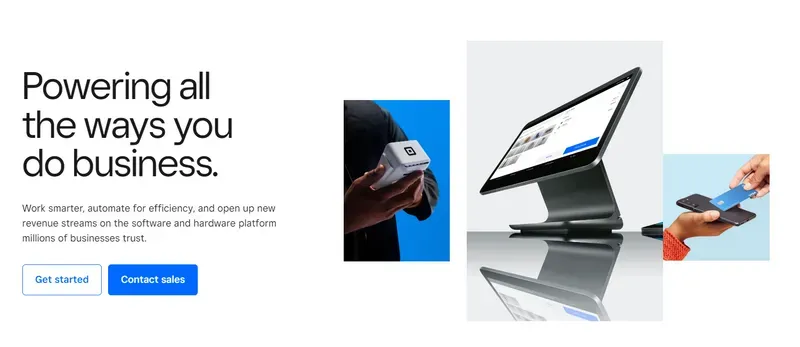
Square functions as a major fintech and digital payments platform, providing a wide array of software and hardware solutions suitable for businesses of all sizes. As a notable Stripe alternative, Square offers a variety of services including efficient payment processing, advanced point-of-sale (POS) systems, and stylish online storefronts.
Advantages:
- The implementation and usage are straightforward.
- Equipped with a wide range of features, this Stripe alternative stands out.
- Known for exceptional customer support.
- Square services are available in numerous countries.
Drawbacks:
- Additional charges have been noted for certain transaction types, introducing a new financial consideration for businesses.
- Support for international payments is limited, potentially complicating global financial transactions.
- Scaling up for larger enterprises can be challenging, although finding solutions remains an intriguing process.
Pricing
With Square, transaction fees vary; a 2.6% fee plus 10 cents per transaction for swiped credit cards, and a slightly higher charge for manually entered card details at 2.9% plus 30 cents per transaction.
Rating
Square earns high marks with a 4.6 out of 5 stars on G2 Crowd and a 4.5 out of 5 stars on TrustPilot.
2. PayPal

PayPal is recognized as a leading electronic payment solution that enables the transfer and receipt of funds over the internet. As a popular alternative to Stripe, it prides itself on a vast global user base numbering in the millions.
Advantages:
- PayPal is widely accepted by a diverse range of vendors worldwide.
- The Stripe alternative is user-friendly, offering simple setup and easy navigation. This makes it accessible for individuals regardless of their technical expertise, facilitating smooth financial transactions.
- High-level security measures are employed to protect users’ financial information.
- A buyer protection policy is available for eligible purchases, providing additional security for shoppers.
Challenges:
- Users engaging in international transactions or dealing with different currencies may encounter significant charges, as PayPal is known for its higher fees in these cases.
- The service may impose restrictions on accounts if suspicious activities are detected.
- Limited customer support has been a point of criticism for PayPal, affecting user satisfaction.
Pricing
PayPal’s fees vary depending on the transaction type, amount, and geographical location. For domestic transactions made with a credit or debit card, a fee of 2.9% plus a $0.30 charge per transaction applies. For international transactions, the fee rises to 4.9%, with an additional fixed fee that depends on the currency.
Rating
On TrustPilot, PayPal has earned a commendable rating of 4.2 out of 5 stars.
3. Adyen

Adyen offers a comprehensive payment solution, facilitating seamless transactions for businesses across various channels such as online, physical stores, and mobile platforms.
With a broad spectrum of payment methods encompassing credit and debit cards, e-wallets, and well-known local payment options, Adyen positions itself as a dependable ally for entities ranging from startups to established brands.
Advantages:
- Users benefit from a wide array of payment options, enhancing transaction ease and flexibility.
- Adyen is a global solution, serving users worldwide. This means it I loballly accessible.
- The platform prioritizes robust security measures to protect user information.
- Adyen is also well-known for its quick and efficient customer support.
Drawbacks:
- The cost of using Adyen can be higher than other market options.
- Although not the simplest system to use, it offers a comprehensive set of features.
- Adyen may present a more costly option when compared to other payment processors.
Pricing
Adyen’s billing model includes a charge per transaction and a monthly fee, which varies depending on the payment method selected and the transaction’s geographical location. The monthly fee also fluctuates with the overall volume of transactions processed.
Rating
Adyen is highly rated, securing a 4.7 out of 5 stars on G2 Crowd and an even higher 4.8 out of 5 stars on Capterra, reflecting its strong market reputation.
4. Braintree

Braintree positions itself as a comprehensive payment processing platform, offering services to businesses in need of both online and in-person payment solutions. Theis Stripe alternative facilitates a wide range of payment methods, including traditional credit and debit cards, along with digital wallets such as PayPal and Apple Pay.
Advantages:
- The platform provides a broad spectrum of payment options, ensuring flexibility and convenience.
- It is designed for easy setup and straightforward navigation, enabling quick implementation.
- Exceptional customer support is available to assist users.
Drawbacks:
- It may not suit businesses with high transaction volumes.
- Some features might incur additional fees.
Pricing
Braintree maintains a fee structure that includes a transaction charge of 2.9% plus $0.30. Businesses processing less than $50,000 annually are subject to a monthly fee of $49.
Rating
The service has received commendable ratings, with a 4.5 out of 5 stars on G2 Crowd and a 4.7 out of 5 on Capterra.
5. GoCardless
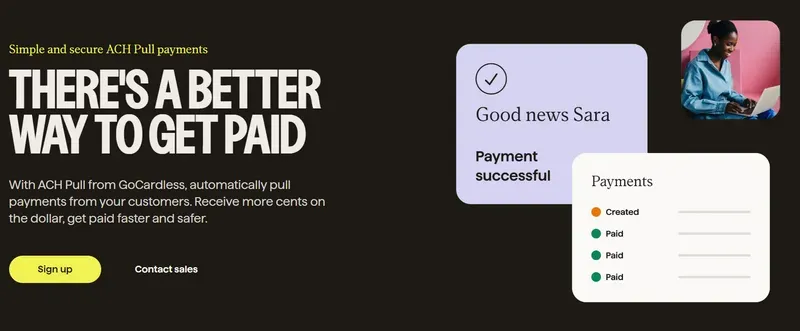
GoCardless is recognized as a premier global payment processing platform that simplifies the collection of recurring payments directly from customers’ bank accounts for businesses.
It is particularly noted for being one of the best Stripe alternatives for businesses seeking a dependable approach to manage recurring transactions.
Advantages:
- Affordability is key with GoCardless, offering a cost-effective pricing structure for payment processing fees.
- It comes packed with features, offering a variety of payment options, straightforward recurring billing, and capabilities for handling international payments.
- The platform is easy to set up and navigate, ensuring a user-friendly experience.
- Exceptional customer support is another significant benefit, distinguishing GoCardless.
Drawbacks:
- GoCardless is not as widely recognized as its competitor, Stripe, making it a less familiar choice in the market.
- The platform has a limited selection of integrations with other business tools, which may be a consideration for some businesses.
Pricing
As a strong competitor to Stripe, GoCardless introduces various pricing tiers based on transaction volume and desired features. With an entry-level plan that accommodates up to 10 transactions a month at no cost.
Rating
The platform boasts a 4.5 out of 5-star rating on G2 Crowd and an impressive 4.7 out of 5-star rating on Capterra.
6. Helcim

Originating from Canada, Helcim offers a wide range of solutions and features for businesses of all sizes. It has become a preferred payment processing service over others like Stripe due to its competitive rates and commitment to excellent customer support.
Advantages:
- Helcim is known for its cost-effective pricing in payment processing services.
- The company has earned a strong reputation for its exceptional customer service.
- Helcim is equipped with a comprehensive set of features, including support for multiple payment methods, recurring billing, and international transactions.
- The platform is designed for ease of use, making it simple for clients to get started and navigate.
Downsides:
- Helcim may not have the same level of brand recognition as Stripe, potentially making it a less familiar choice for businesses looking for a well-known payment processor.
- This Stripe alternative has a limited selection of international currencies it supports, which could restrict options for global transactions.
Pricing
Helcim’s pricing varies depending on the payment option selected and the volume of transactions. For credit card payments, the rate is 2.9% plus $0.30 per transaction, while debit card payments incur a charge of 2.6% plus $0.30 per transaction.
Rating
With a 4.7 out of 5-star rating on G2 Crowd and a 4.8 out of 5-star rating on Capterra, Helcim has clearly demonstrated its value and reliability to its customers.
7. Shift4

Shift4 is recognized as a distinguished payment processing provider serving a wide range of businesses. Offering a strong alternative to Stripe, it is equipped with numerous features and benefits, making it a comprehensive solution for transaction requirements.
Advantages
This platform supports a variety of payment methods, including credit and debit cards, ACH transfers, and eWallets, providing a seamless transaction process for different preferences.
*This Stripe alternative enables businesses to enhance their billing system with a recurring billing feature, offering a more efficient, automated approach to payment collection.
With capabilities for international payments, it allows businesses to expand their reach and connect with customers worldwide.
Equipped with advanced fraud protection technology, it helps businesses protect their transactions from fraudulent activities.
The platform supports an extensive selection of payment methods, catering to a broad range of transactional needs.
Downsides:
Initial set-up and utilization may be somewhat complex.
It might not be as well-known as its competitor, Stripe.
Pricing
Shift4 customizes its pricing based on factors like account choice, selected payment options, and transaction volume. It offers a versatile range of pricing plans, ensuring there is an option that suits the specific needs of your business.
Rating
It has received impressive ratings, with a 4.5 out of 5 stars on G2 Crowd and an even more commendable 4.7 stars out of 5 on Capterra.
8. Stax

Stax positions itself as an all-encompassing payment processing solution, suitable for diverse business sizes and types, ranging from small coffee shops to large online marketplaces.
This Stripe alternative features an intuitive interface for ease of use, competitive pricing options for those watching their budget, and a comprehensive set of capabilities to fulfill various payment processing requirements.
Advantages:
- Boasts a user-friendly and easy-to-navigate interface
- Offers a wide range of functionalities, including support for various payment methods, recurring billing, and international transactions.
- Provides a robust customer support system, ensuring a reliable help resource is always available.
Drawbacks:
- Less well-known compared to competitors like Stripe
- May not be the best fit for businesses with complex payment processing needs.
Pricing
Stax presents itself as an affordable alternative to Stripe, with a variety of pricing plans designed to cater to different business needs. Starting with a free basic plan. Stax equips businesses with essential transaction processing tools, including the ability to accept credit and debit card payments, as well as support for Apple Pay, Google Pay, and PayPal.
For businesses in need of more advanced features, the premium plan starts at a reasonable $29 per month and includes additional benefits like recurring billing, support for international payments, and advanced fraud protection.
Rating
Stax has earned commendable ratings, including 4.5 out of 5 stars on G2 Crowd and 4.7 stars out of 5 on Capterra.
9. Venmo for Business
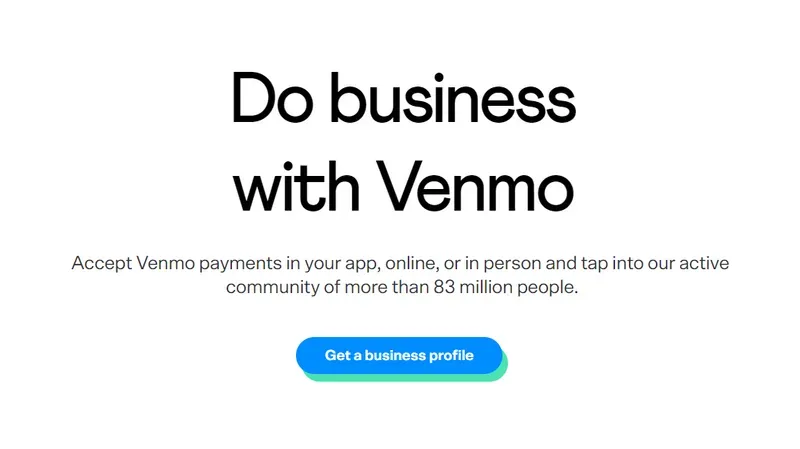
Venmo for Business provides a versatile payment solution, facilitating seamless Venmo transactions for companies. Its services are widely recognized as beneficial, especially for small enterprises and new startups.
Advantages:
- The setup and operation process of Venmo for Business is remarkably uncomplicated.
- The platform promotes a clear-cut pricing strategy, exempting businesses from monthly fees.
- Benefiting from a large user base, Venmo for Business helps companies reach a wider audience by incorporating its payment option.
- Its popularity as a primary payment method is on the rise, attributed to an interface that users can effortlessly navigate.
Drawbacks:
- Despite its popularity, Venmo for Business lacks several advanced features that are available with other payment processors, such as support for recurring payments and international transactions.
- Transactions involving credit card payments incur higher fees.
- The effectiveness of Venmo for Business’s customer support has been a point of contention for some users.
Pricing
The pricing model for Venmo for Business is clear and straightforward, charging a modest 1.9% fee per transaction without imposing monthly recurring costs or hidden fees.
Conclusion
Payment processors similar to Stripe are prominent in the digital transactions sector, providing a stable platform for managing payments.
However, Stripe may not fulfill the requirements for every kind of business. For those seeking out Stripe alternatives, there is no shortage of options available. By evaluating different factors like features, costs, and other criteria, the perfect payment processing solution for any business can be found.


